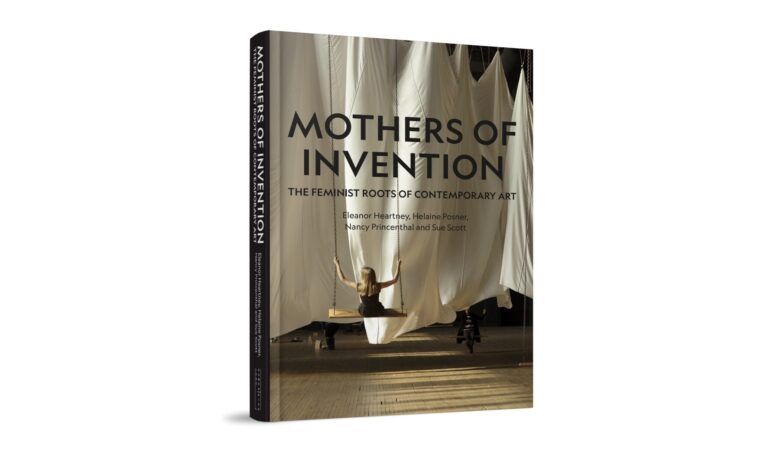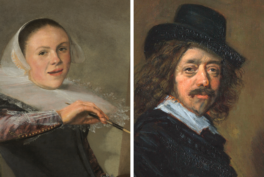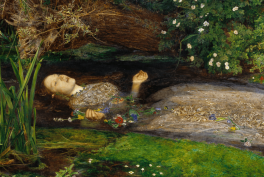Although the book begins with American female artists, the authors expand their discussion to include non-Western, queer, and male artists from different classes. But before delving into the chapters of this publication, it is important to clarify the authors’ stance on feminism.
Performance Art and Action
Helaine Posner is an author and the Chief Curator Emerita at the Neuberger Museum of Art in Purchase, NY, USA. In the first chapter, she goes back to the 1920s and the Dada and Futurist movements, tracing the development of performance art. Deeply intertwined with the emergence of counterculture and largely driven by revolutionary contexts, much performance art then addressed societal issues. It served as a platform for female artists of first-wave feminism, notably for denouncing assaults and providing an outlet for public expression.
The author presents various artworks from the 1960s to the present day. She highlights iconic figures such as Marina Abramović, Orlan, and Cindy Sherman, illustrating how performance has been utilized as a symbolic weapon to deconstruct patriarchal norms surrounding femininity.
Handmade: Art, Craft, and Feminism
This chapter is authored by the award-winning writer Nancy Princenthal. She delves into the process of women reclaiming craft and elucidates its backstory.
The author explores the historical perception of craft, explaining how women integrated these practices into the art world. She reveals the self-perpetuating cycle of craft being undervalued because it was seen as a feminine hobby, while women were simultaneously confined to the realm of craft. For instance, she cites the Bauhaus Academy, in which female artists were restricted to textiles and ceramics workshops. Also, the craft arts hold significance due to their connection to traditional craftsmanship and non-Western influences. Consequently, it became integral to struggles for the rights of non-Western people. Finally, studying the history of craft raises awareness of the boundary between artwork and functional objects.
Beyond Tragic and Timeless: Women, Abstraction, and Feminism
Sue Scott is an independent curator, writer, and director of the Sue Scott Gallery in New York City, NY, USA. Long intrigued by abstract painting, she chose to expose it in her contributing chapter of the book, as a form of feminism connected with innovation while describing its formal and symbolic qualities.
This chapter is somewhat unique because, as the essence of abstract painting is to lack content, the question arises: How can it be feminist? Moreover, unlike other mediums discussed in this book, painting has long been a male-dominated sphere. Thus, this chapter delves into the struggle of female artists to establish their presence in abstract painting.
Among other topics, Scott discusses the significant influence of Hilma af Klint. Since 1906, this Swedish painter began creating abstract compositions, years before the so-called creator of abstraction, Wassily Kandinsky, driven by an impulse to establish a connection between consciousness or materiality and spirituality. However, unlike her male contemporaries, her work went unrecognized by the art world until 1985. The case of af Klint serves as evidence of the inherent misogyny in the art world, refusing to acknowledge her as the pioneer of abstract painting that she truly is. More broadly, abstract painting serves as an example of the systematic erasure of women’s contributions.
Challenging Dominionism: How Women Rewrote the Role of Humans in Nature
The author and contributing editor, Eleanor Heartney, concludes the book with a chapter dedicated to ecofeminism. Having studied eco-art since the beginning of her career in the 1980s, she then turned her focus to eco-feminist art and the challenges posed by the essentialist notion linking women and nature.
This section differs significantly from the others. It is not centered around a specific artistic medium but rather around an engagement against the belief in human supremacy over the ecosystem. The feminist and environmentalist movements developed somewhat concurrently, around the rise of counterculture in the 1970s. Finding numerous similarities in their revendication, a new branch emerged. Consequently, ecological art was spearheaded by women. Heartney eloquently explains why studying eco-feminist art is important due to its intersectional essence.
Eco-feminist art offers an alternative approach to envisioning the future. One in which the capitalist system is dismantled. It serves as explicit activist art, advocating for the end of women’s domination as well as the domination of all species on the planet. Drawing upon the works of significant eco-feminist writers such as Carolyn Marchant and Donna Haraway, this chapter elucidates how feminism has nurtured and expanded the ecological movement, actively contributing to the formation of contemporary art.
Finally, this publication is more than an innovative catalog of artworks. It represents a significant step towards a more inclusive and, therefore, objectively more accurate history of art.
Mothers of Invention: The Feminist Roots of Contemporary Art by Eleanor Heartney, Helaine Posner, Nancy Princenthal and Sue Scott was published in March 2024 by Lund Humphries.









